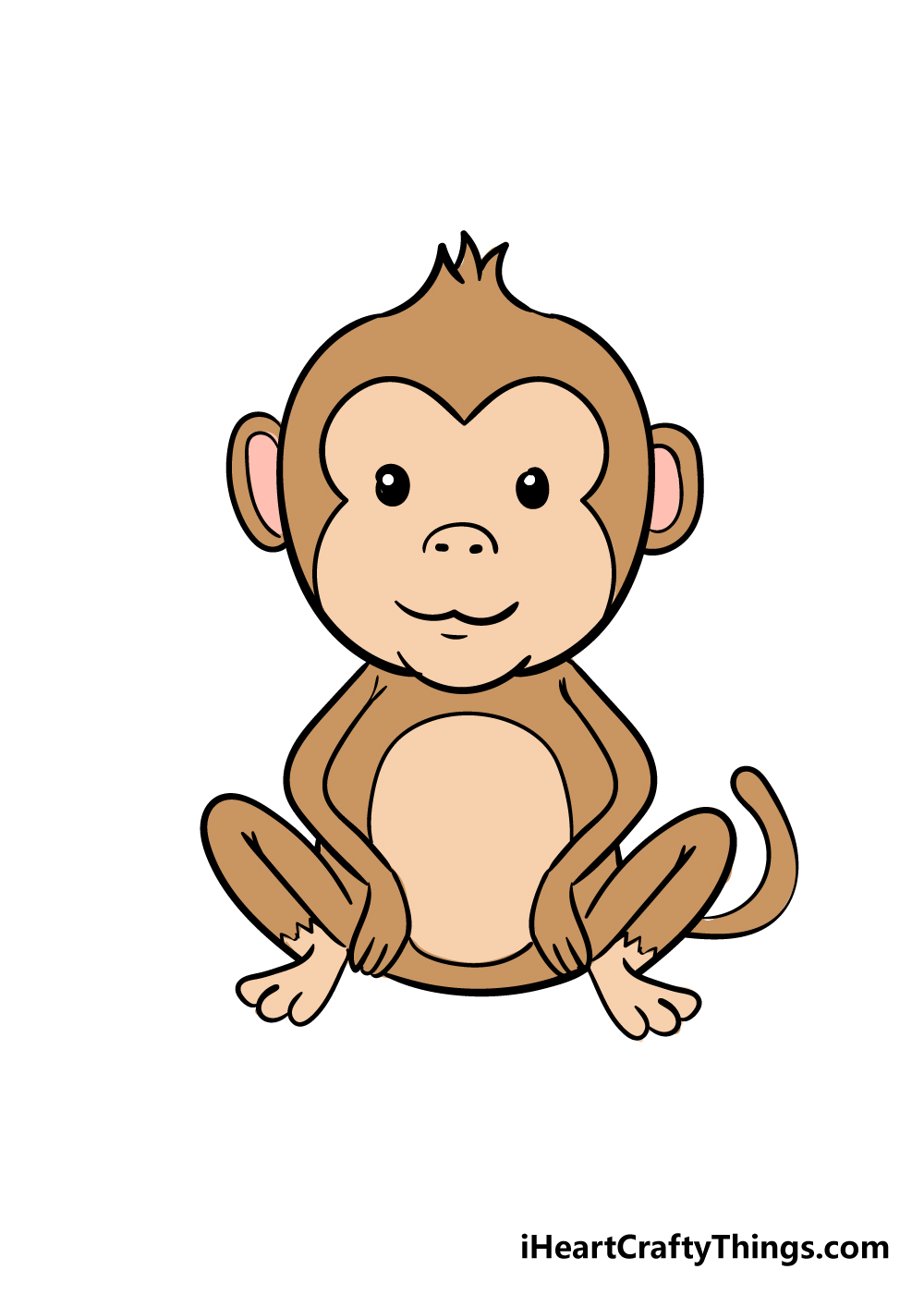How To Draw A Monkey: Easy Step-by-Step Tutorials
Ever wondered how to capture the playful spirit of a monkey on paper? Unleashing your inner artist is simpler than you think, whether you're aiming for a realistic primate portrait or a charming cartoon character. This guide dives into the world of monkey drawing, offering a comprehensive exploration of techniques and approaches for every skill level.
From basic shapes to intricate details, we'll unravel the secrets to sketching these fascinating creatures. Discover how simple lines and curves can transform into expressive eyes, mischievous smiles, and dynamic poses. We'll delve into the nuances of depicting fur texture, capturing the essence of different monkey species, and even explore creative variations like logo design. Whether you're a seasoned artist or a budding beginner, prepare to embark on a creative journey into the captivating realm of monkey art.
| Common Name: | Monkey (This encompasses a wide range of primate species) |
| Scientific Classification: | Primates (Order), Haplorhini (Suborder) - further classification varies greatly depending on the specific species (e.g., Cebidae for New World Monkeys, Cercopithecidae for Old World Monkeys) |
| Lifespan: | Varies greatly by species; from a few years to several decades. |
| Habitat: | Tropical forests, woodlands, grasslands, and mountains across Asia, Africa, and the Americas. |
| Diet: | Omnivorous, including fruits, leaves, insects, nuts, seeds, and sometimes small animals. |
| Physical Characteristics: | Five-fingered hands and five-toed feet, often with opposable thumbs and big toes for grasping. Highly variable in size and coloration. |
| Behavior: | Known for their intelligence, social behavior, and arboreal lifestyles (many species). |
| Reference: | National Geographic - Monkeys |
Drawing a monkey can be as simple as starting with a basic circle for the head. This foundational shape serves as the anchor for the rest of the monkey's features. Imagine this circle as a three-dimensional sphere, helping you visualize how the facial details will wrap around its curved surface.
Once you have the head, add a simple cross to guide the placement of the eyes, nose, and mouth. This cross acts as a roadmap, ensuring that these features are proportionally balanced and aligned within the circle. Consider the angle of the head is your monkey looking straight ahead, tilting its head curiously, or glancing sideways?
Next, begin to define the contours of the face. Using gentle curves, shape the jawline and chin, taking into account the specific monkey species youre drawing. Some monkeys have rounder faces, while others have more pronounced jaws. Refer to reference images for inspiration and guidance.
Now for the expressive details the eyes! Monkeys are known for their captivating eyes, which convey a range of emotions. Start with simple ovals and gradually add details like pupils, irises, and eyelids. The placement and shape of the eyebrows further contribute to the monkeys expression, whether it's mischievous, curious, or playful.
The nose is another crucial feature, varying significantly among monkey species. Some have small, button-like noses, while others have broader, flatter noses. Carefully observe your reference image and sketch the nose accordingly, paying attention to the nostrils and any unique characteristics.
Don't forget the mouth! A simple curved line can create a smile, a frown, or a playful smirk. Add subtle lines around the mouth to suggest the underlying muscle structure and create a more realistic effect. Think about the monkey's overall mood and how its mouth contributes to that expression.
Now that the face is taking shape, move on to the ears. Monkeys ears are often large and prominent, positioned on the sides of the head. Sketch them in using curved lines, paying attention to their shape and size relative to the head. Are they rounded or pointed? Folded or flat? These details can make all the difference.
With the head complete, it's time for the body. Start by sketching a simple oval or teardrop shape for the torso, connecting it to the head. The size and shape of the torso will depend on the monkey's pose and species. Is it sitting, standing, or swinging? Is it a slender monkey or a stockier one?
Add the limbs, starting with simple lines and gradually refining their shape. Consider the monkeys posture and how its limbs are positioned. Is it reaching for a branch, scratching its head, or holding something? The limbs contribute significantly to the monkey's overall pose and dynamism.
Hands and feet are next. Monkeys have five fingers and five toes, often with opposable thumbs and big toes for gripping and manipulating objects. Sketch these digits carefully, adding details like fingernails and toenails for realism.
Finally, the fur! Use short, light strokes to suggest the texture and direction of the monkeys fur. Vary the length and density of the strokes to create a sense of depth and volume. Pay attention to how the fur lies on the body, following the contours of the muscles and bones beneath.
Learning to draw a monkey is a journey of observation, practice, and creativity. Explore different drawing styles, experiment with various poses and expressions, and dont be afraid to put your own unique spin on your monkey creations. Whether youre drawing a realistic chimpanzee or a stylized cartoon monkey, embrace the process, have fun, and let your artistic spirit soar!


